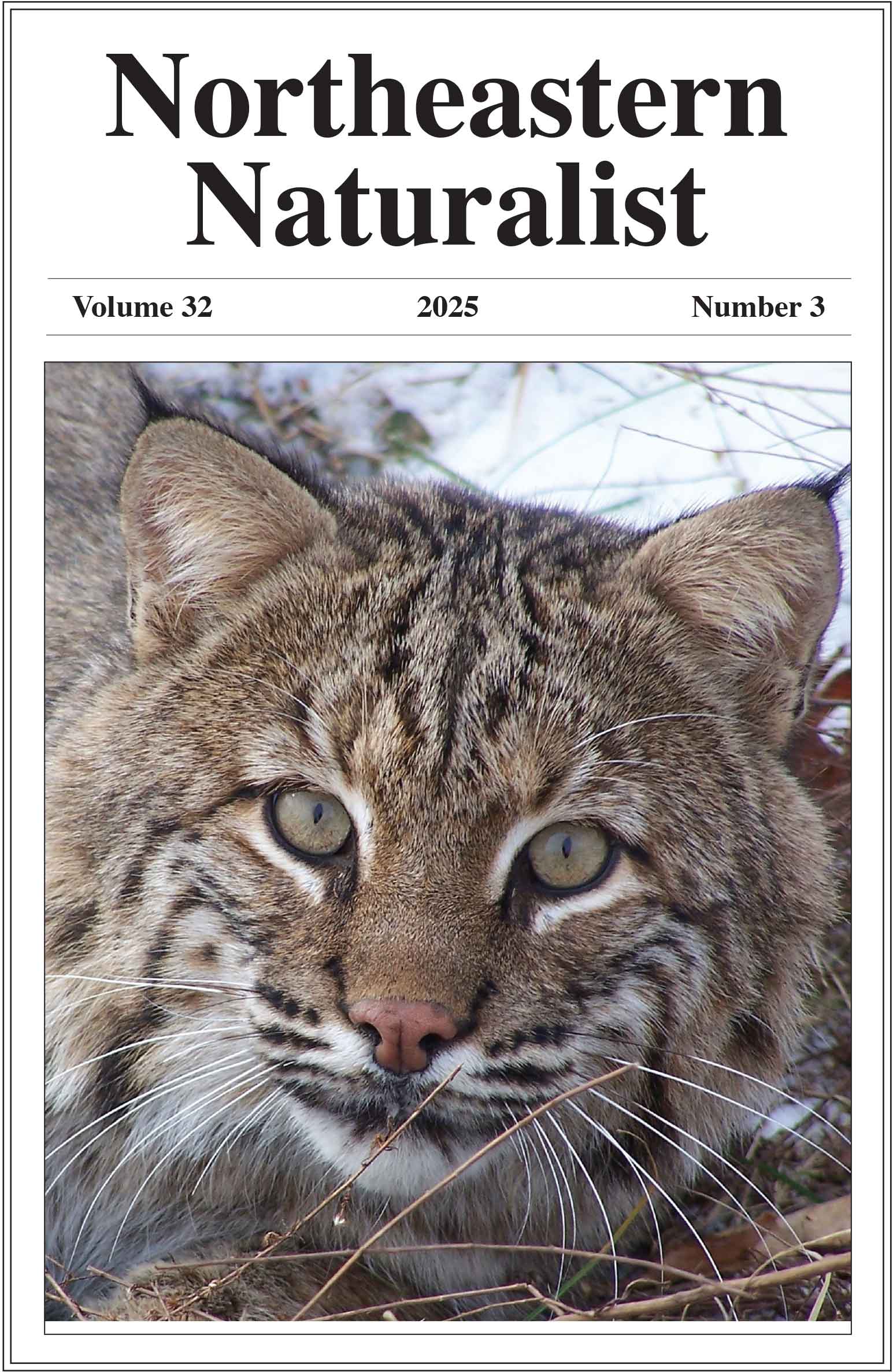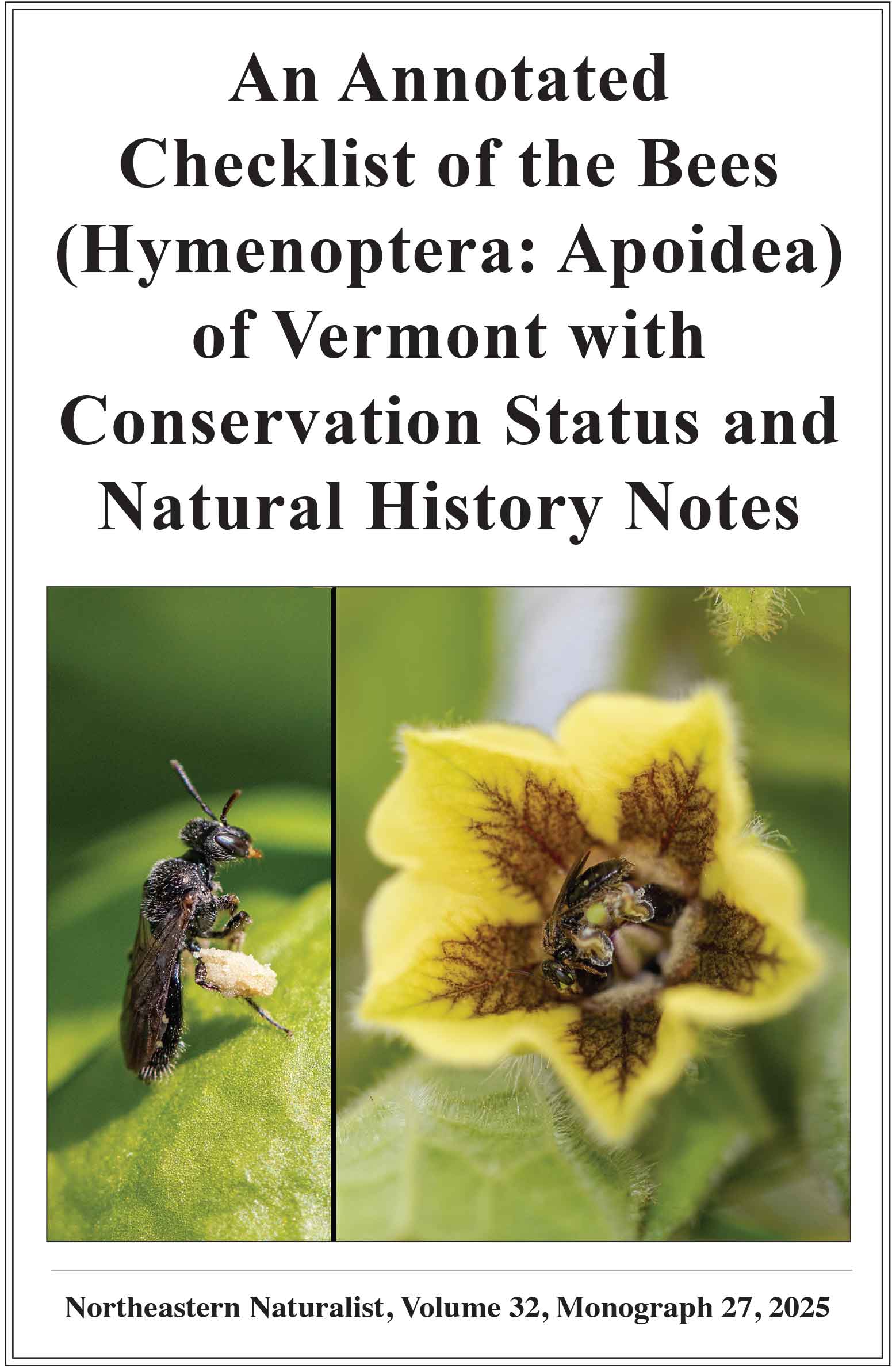Anomalous Double-Clutch Laying in the Black Vulture (Coragyps atratus): Replacement Eggs or Biochemical Alterations of the Breeding Cycle?
Diego Gallego-García1,2,3,*, Matthew J. Bowers1,4, David R. Barber1, and Bracken M. Brown1
1Department of Plant Sciences and Entomology, University of Rhode Island, Kingston, RI 02881. 2Centro para el Estudio y Conservación de las Aves Rapaces en Argentina (CECARA), Universidad Nacional de La Pampa (UNLPam), Santa Rosa, La Pampa, Argentina. 3Instituto de las Ciencias de la Tierra y Ambientales de La Pampa (INCITAP), Consejo Nacional de Investigaciones Científicas y Técnicas (CONICET), Santa Rosa, La Pampa, Argentina. 4University of Wyoming, Laramie, WY 82071. *Corresponding authors.
Northeastern Naturalist, Volume 32, Issue 3 (2025): N46–N50
First published early online: 11 August 2025
Abstract
We describe the first documented case of anomalous double-clutching behavior in Coragyps atratus (Black Vulture) in northeastern North America. The female laid 2 eggs, which hatched successfully, and laid an additional clutch of 2 eggs, probably post-hatching, which it did not incubate, but were eventually consumed by the adults. Although we cannot determine the reason for this rare nesting behavior, the possibility of a double-brooding attempt was unlikely due to the timing of egg laying and the eggs not being incubated, yet we are not able to discard the possibility of an event of intraspecific nest parasitism. Since egg-laying is expensive in terms of energy, and may compromise adults’ future reproduction and survival, this redundant expenditure suggests that (1) this pair of Black Vultures may have a resource-rich environment, and/or (2) the food availability derived from anthropogenic byproducts might be altering the biochemical cycles of reproduction timing. Further research is needed to ascertain whether the recent range expansion of Black Vultures in North America due to human activity may hide a threat that could compromise its populations in the future.
![]() Download Full-text pdf (Accessible only to subscribers. To subscribe click here.)
Download Full-text pdf (Accessible only to subscribers. To subscribe click here.)
Access Journal Content
Open access browsing of table of contents and abstract pages. Full text pdfs available for download for subscribers.
Issue-in-Progress: Vol. 32(4) ... early view
Check out NENA's latest monograph and Special Issue:













 The Northeastern Naturalist is a peer-reviewed journal that covers all aspects of natural history within northeastern North America. We welcome research articles, summary review papers, and observational notes.
The Northeastern Naturalist is a peer-reviewed journal that covers all aspects of natural history within northeastern North America. We welcome research articles, summary review papers, and observational notes.